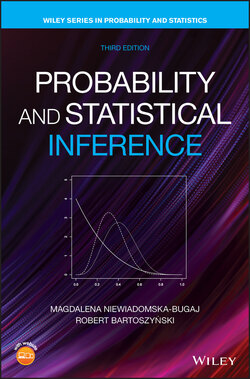Читать книгу Probability and Statistical Inference - Robert Bartoszynski - Страница 89
Solution
ОглавлениеThis problem appears in many textbooks under various formulations (e.g., of guests receiving their hats at random). One could expect the probability of at least one match to vary greatly with . However, the contrary is true: this probability is almost independent of . Let be the event that th letter is placed in the correct envelope. Using formula (2.6), we have
By symmetry, the probability of each intersection depends only on the number of events in the intersection,2, so we let denote the probability of the intersection of events, Clearly, the numbers of terms in the consecutive sums are
and
(3.25)
To evaluate we can argue as follows: Assume that the envelopes are ordered in some way. The total number of ways one can order letters is . If specific events, say are to occur (perhaps in conjunction with other events), then the letters number must be at their appropriate places in the ordering (to match their envelopes). The remaining letters can appear in any of the orders. Thus,
Consequently, the th term in the sum (3.25) equals (up to the sign)
and we obtain
Since
we have
with the accuracy increasing as . The approximation is actually quite good for small . The limiting value is 0.63212056, while the exact values of the probability of at least one match for selected values of are
